 ...
...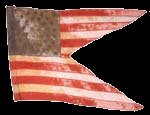
Anthony Plant and the Seventh Regiment Maine Volunteer Infantry
 ...
...
The 7th Maine Volunteer Infantry was organized at Augusta, Maine and mustered in on August 21, 1861 (7th Maine National Regimental flag and guidon pictured above)Like many regiments, the Seventh Regiment Maine Infantry lost more men to disease than to injuries in battle. Of the 340 who died, 15 officers and 113 enlisted men died of wounds, while 3 officers and 209 soldiers died of disease. Another 19 died in Confederate prisons. The Seventh Maine mustered in August 21, 1861 in Augusta, and some brigades served until 1864, after which some veterans and recruits transferred to the First Maine Veteran Infantry. The regiment was recalled to Maine from October, 1862 until January, 1863, to recruit.
Left State for Baltimore, Md., August 23.
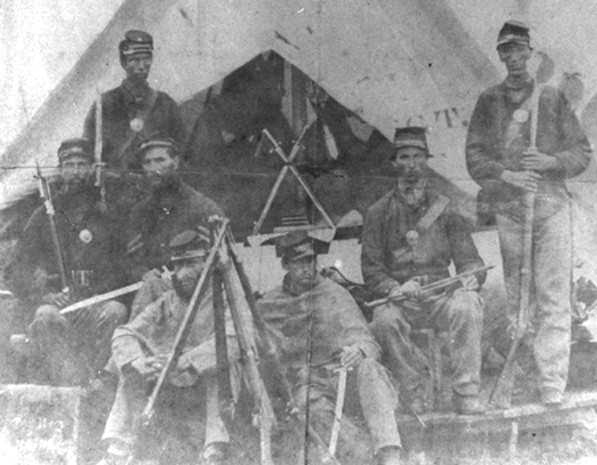
Anthony Plant served in the 7th Maine Infantry Volunteers, Companies E and F, according to the Rolls. Some of the Soldiers posing in front on their tent (above photo) are Penobscot Indians. Enlisted as Antonio Plant, he was wounded and captured at James River during the battle of White Oak Swamp on June 30, 1862. Confined at Richmond, Virginia on July 13, 1862 and was admitted to a hospital at Savage Station, Virginia with a wound in the leg. On August 3, 1862, he was exchanged for a prisoner from City Point, Virginia. Returning to Maine, he was discharged in May 1863 and received a pension. (Scott Hann collection, U.S. Army Military History Institute)
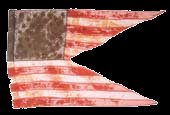
Attached to Dix's Division, August to October, 1861.
Davidson's Brigade, W. F. Smith's Division, Army of the Potomac, to March, 1862.
3rd Brigade, 2nd Division, 4th Army Corps, Army of the Potomac, to May, 1862.
3rd Brigade, 2nd Division, 6th Army Corps, to August, 1864.
SERVICE--Duty at Baltimore, Md., until October 25, 1861. Moved to Washington, D.C. Duty at Georgetown Heights until November 7, and at Lewinsville, Va., until March, 1862. Advance on Manassas, Va., March 10-15. Return to Alexandria, thence moved to Fortress Monroe, Va., March 23-24. Reconnaissance to Watt's Creek March 27-31. Siege of Yorktown April 5-May 4. Battle of Williamsburg May 5. Advance up the Peninsula May 9-13. At White House until May 19. Mechanicsville May 23-24. Seven days before Richmond June 25-July 1. Garnett's and Golding's Farms June 27-28. Savage Station June 29. White Oak Swamp Bridge and Glendale June 30, Anthony (Antonio) Plant wounded and captured.
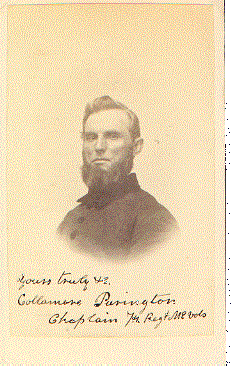
Chaplain of the 7th Regiment
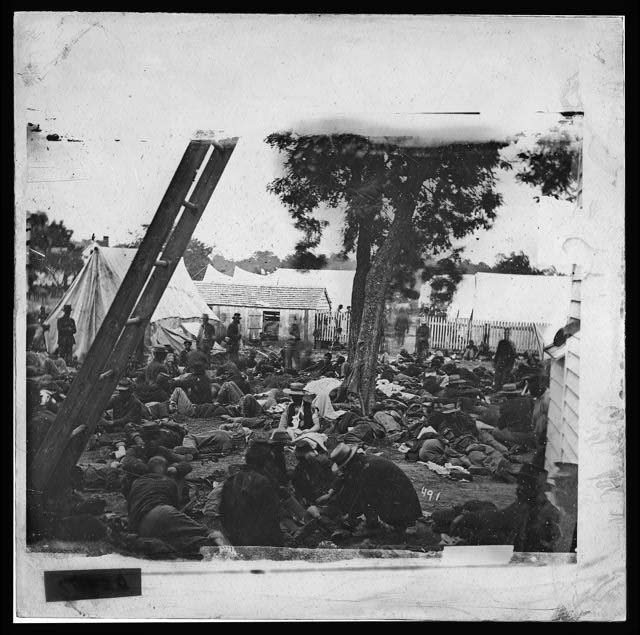
Anthony Plant, wounded and captured, taken to Savage Station Hospital. This is an actual photo of Savage Station Hospital on June 30, 1862, immediately following the battle taken by Jame F. Gibson (b: 1828), photographer.
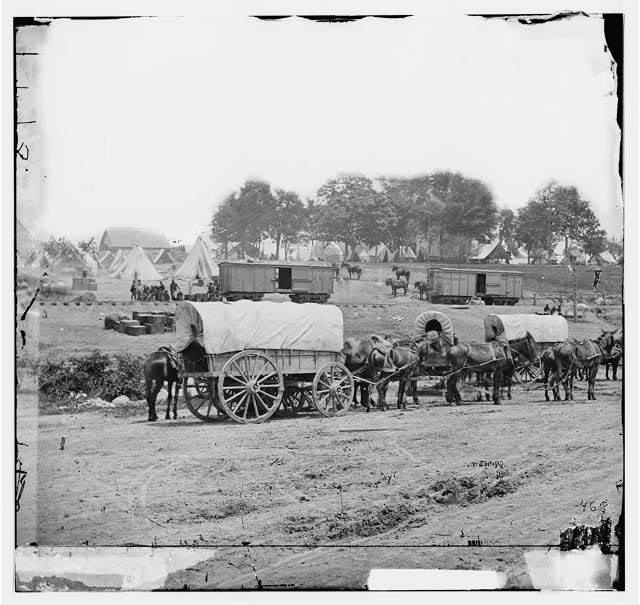
On August 3rd, 1862, Anthony Plant was transported from Savage Station (above phobo) to Richmond, Virginia (above photo by George N. Bernard).
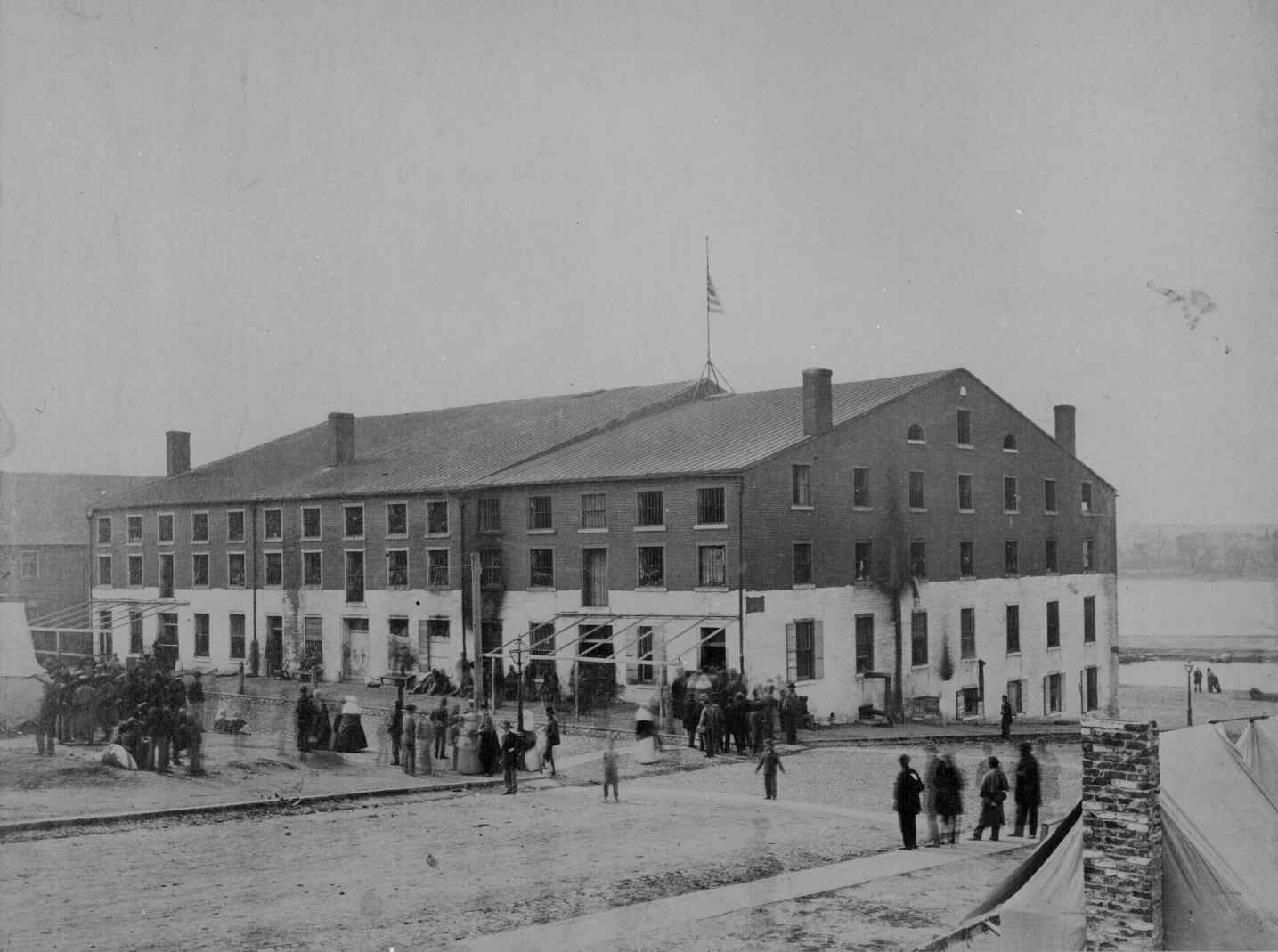
While Libby Prison (above) was utilized primarily as a prison to contain Union officers, the Confederates used the facility to process more than 50,000 prisoners before sending them off to other camps. Anthony Plant was detained at Libby Prison, with his leg wound, until his exchange on August 3, 1862 at City Point, Virginia.

City Point (Hopewell, Virginia.)
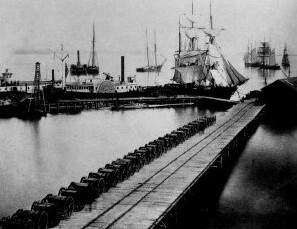
A once thriving river port that was well in decline when it was occupied by Federal troops in early May, City Point had become the logistical hub for all operations against Petersburg and Richmond.
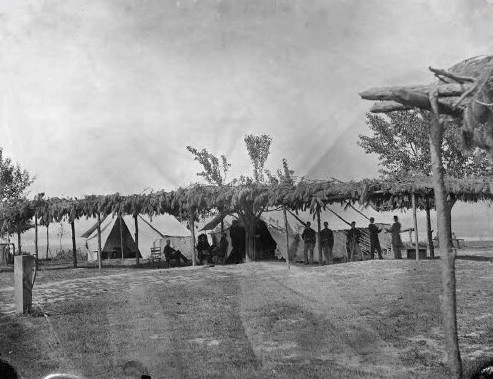
Many of the Union wounded, to include Anthony Plant from the battle of White Oak Swamp, and those Soldiers from the battle of the Crater, were brought to field hospitals that had been established at City Point.
Details of the Battle of White Oak Swamp
Peninsula Campaign: March-August 1862 :
Glendale, Virginia (VA020a) , Henrico County, June 30, 1862
White Oak Swamp, Virginia (VA020b) , Henrico County, June 30, 1862
(By Herman Hattaway and Ethan S. Rafuse)While a heavy rain fell, US Major General George B. McClellan's retreating Army of the Potomac withdrew from the vicinity of Savage's Station during the night of June 29-30 and concentrated behind White Oak Swamp. Hoping to catch the Federals before they could pass Glendale, near the critical crossroads that stood between Savage's Station and sanctuary on the James River, CS General Robert E. Lee directed CS Major General Thomas J. "Stonewall" Jackson's four divisions to pursue the Federal rear guard as it retreated on the White Oak Bridge Road, and to cross the White Oak Swamp. Lee rode with CS Major General James Longstreet's column for the attack from the west on the Federals along their line of march to the James. But once again—and typical of the Seven Days battles—Lee's plans miscarried, stymieing his plans for a coordinated offensive. The convoluted battle is now known by several names: Glendale (the name of the R. H. Nelson farm), White Oak Swamp, Frayser's Farm, Nelson's Farm, Charles City Crossroads, New Market Crossroads, and Turkey Bridge.
Jackson advanced his 20,000 men down the road to the bridge across the White Oak Swamp Creek. Shortly before 11:00 a.m. his lead force found the bridge destroyed. Even though there were fords where Jackson perhaps could have forced a crossing, he chose instead to stop and hurl artillery shells across the creek. The extended artillery duel was between Jackson's divisions and the strongly positioned Union rear guard, US Major General William B. Franklin's 17,000-man command. It included US Brigadier General William F. Smith's VI Corps division and US Brigadier General Israel B. Richardson's II Corps division. Concluding that the Union rear guard was too strong to attack with any success, and ruling out any notion of seeking an alternative route to the Union rear, Jackson exchanged artillery fire with the Federals. His infantry was not involved in the battle.
Meanwhile CS Major General John B. Magruder and his three divisions were to support the attack of Longstreet's column under Lee's direct command. Magruder, however, was delayed by changes in his orders and in his route, and his 13,000 men missed the fighting. CS Major General Benjamin Huger's 9,000-man division was to open the Confederate offensive by marching toward Glendale on the Charles City Road and attacking US Brigadier General Henry W. Slocum. Huger's advance was slowed by felled trees across the road, and instead of a major infantry assault, he ordered "moderate" artillery fire.
By 11:00 a.m. Longstreet and CS Major General Ambrose Powell Hill had their 20,000 men in position, and they awaited Huger's firing, which would indicate the beginning of the concerted action. At 2:30 p.m. Longstreet heard artillery firing on his left and assumed it was Huger's attack. Longstreet passed the word for his batteries to open fire, signaling his cooperation with the expected advance.
President Jefferson Davis, Lee, their respective staffs, and a number of followers were with Longstreet in a field near the rear of Longstreet's right flank. Their conversations were interrupted by Federal artillery fire. One shell burst in the midst of the group, killing two or three horses and wounding one or two men. In response to Hill's "orders," Davis, Lee, and their entourage rode to safety while Longstreet took action to try to silence the twenty-four guns in the six Federal batteries that were firing at his cannons. Long-range artillery fire proved inadequate, and Longstreet ordered CS Colonel Micah Jenkins to charge the offending batteries. That brought on a general fight between Longstreet's command and the Federals in their front.
Thus were Longstreet's and Hill's divisions hurled in piecemeal assault, belatedly beginning at 4:00 p.m., at the Federal position. The brunt of the attacks fell upon the position held by US Brigadier General George A. McCall's 6,000-man division of Pennsylvania Reserves of the V Corps. While the entire main Confederate force was concentrated within a three-mile radius and should have been able to hear the battle as it developed, Longstreet and Hill received no help from the other divisions. When a report arrived that Federals had reached Malvern Hill and the protection of Union gunboats on the James, Lee—mistakenly assuming that Jackson and Huger would be joining the attack at Glendale—ordered Magruder's Division south to support CS Major General Theophilus Holmes's efforts to prevent the head of the retreating Federals from establishing a position on Malvern Hill. Holmes was stopped by Federal fire from artillery on Malvern Cliff and from two gunboats. Holmes retired before Magruder approached.
Nevertheless, the attacking Rebels achieved some initial success. The Union line of 40,000 men positioned in an arc from north to south of the Glendale intersection was not continuous because there was no overall commander on the field to organize it. The fact that McClellan spent much of the battle on the gunboat Galena scouting positions along the James River led many of his critics to claim later that he had lost his courage to command. McCall's line broke in the course of vicious contests in the dense and tangled undergrowth, particularly where CS Brigadier General James Kemper's Virginians, supporting Jenkins, followed several hours later by CS Brigadier General Cadmus M. Wilcox and his Alabamians, achieved the breakthrough. The fighting grew even more intense when Wilcox's men hit US Brigadier General George Gordon Meade's Pennsylvanians, captured the six-gun battery of US Lieutenant Alanson Randol, and wounded Meade. McCall was captured when he rode into a Rebel picket post just after dark while determining the placement of reinforcements. However, the Confederate attack had been launched near the Union army's center, so ample reinforcements from the Union II Corps and III Corps were available to close the gap. US Brigadier General Philip Kearny's division suffered the greatest losses.
By the time the fighting ended at about 9:00 p.m. it was clear that Lee's effort to destroy the Union army had failed. The Federals had held, preserving their line of march to the James. That evening a disappointed Robert E. Lee reconcentrated his forces to follow the enemy toward Malvern Hill.
Estimated Casualties: 2,700 US, 3,600 CS

Seventh Regiment Maine Volunteer Infantry History(Cont'd)Malvern Hill July 1. At Harrison's Landing until August 15. Movement to Fortress Monroe, thence to Centreville, August 15-27. In works at Centreville August 27-31. Assist in checking Pope's rout at Bull Run August 30, and cover retreat to Fairfax Court House September 1. Maryland Campaign September-October. Crampton's Pass, South Mountain, September 14. Battle of Antietam September 16- 17. Ordered home to recruit October, and at Portland, Me., until January 21, 1863. Joined Brigade and Division at White Oak Church, Va., January 25. Chancellorsville Campaign April 27-May 6. Operations at Franklin's Crossing April 29-May 2. Maryes Heights, Fredericksburg, May 3. Salem Heights May 3-4. Banks' Ford May 4. (Co. "F" Joined May 23.) Operations at Franklin's Crossing June 5-13. Battle of Gettysburg, Pa., July 2-4. Fairfield July 5. Near Funkstown, Md., July 10-13. Bristoe Campaign October 9-22. Advance to line of the Rappahannock November 7-8. Rappahannook Station November 7. Mine Run Campaign November 26-December 2. Campaign from the Rapidan to the James River May 3-June 15, 1864. Battles of the Wilderness May 5-7; Spotsylvania May 8-12; Spotsylvania Court House May 12-21. "Bloody Angle," assault on the Salient, May 12. North Anna River May 23-26. On line of the Pamunkey May 26-28. Totopotomoy May 28-31. Cold Harbor June 1-12. Before Petersburg June 17-July 9. Jerusalem Plank Road June 22-23. Moved to Washington, D.C., July 9-11. Repulse of Early's attack on Washington, D.C., July 1!-12, Sheridan's Shenandoah Valley Campaign August 7-21. Mustered out at Charlestown, Va., August 21, 1864. Veterans and Recruits transferred to 1st Maine Veteran Infantry.
The Seventh Maine Regiment lost during service 15 Officers and 113 Enlisted men killed and mortally wounded and 3 Officers and 209 Enlisted men by disease, 19 in Confederate prisons. Total 340.
THE GALLANT SEVENTH MAINE REGIMENT
The Seventh Maine Regiment
By Sarah Brown
Hurrah for the gallant Seventh of Maine
Three warm heart cheers for you
Who stood on the dreadful battle plain,
The truest of the true!
Nor feared to face sextuple foe,
Where'er the stars and stripes should go.
Then three times three for the brave Pine Tree
That reared her sons to toil
With stalwart arm in labor free,
To fit for traitor soil;
To fight the rebel ensign low,
Where'er the stars and stripes should go.
Where deep forests darken, o'er mountain and dell,
Where lakes lie embosomed and broad rivers swell,
Where hills with their granite foundations arise
And wild deer still startle in timid surprise,
Thence came in broad with ranks, with a ready right-hand,
A host of God's workmen, the pride of the land.
The forest had fallen before their strong stroke,
Their pioneer footsteps its long silence had broke,
And on the Penobscot and Kennebec's breast,
The lumbermen mounted a glorious crest.
Aroostook flung open its long folded door,
And mythic "Down East", was a fable no more.
From woodland and seashore, from mountain and glen,
From Camp-fire and Corn-field came forth the staunch men,
From Cabin and Cottage and Mansion, as one,
They flocked round our standard, bold sire and brave son;
The axe and the plough changed for rifle and sword,
They manfully mustered a proud loyal horde.
Heaven's brownest baptism of sunshine and air
Had christened their foreheads, and left its mark there.
And Heaven's elixir of wild wine and dew
Had heighted and broadened and strengthened them too,
And steadied a nerve that no tremor could know,
Leastwise when their aim was a base traitor foe.
Then three times three, for the brave Pine Tree
That reared her sons to toil
With stalwart arm in labor free,
To fit for traitor's soil;-
To level rebel stars and bars,
And raise the glorious stripes and stars.
(May 22, 1862) Salem Register
Reprinted in the Eastern Argus Portland, Maine on Saturday October 11, 1862.
--------------------------------------------------------------------------------